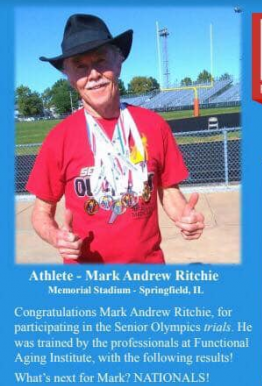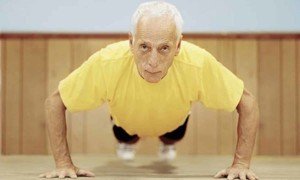The Humble Pushup
My clients have evolved from being my students to also being my teachers, or, it might be better said, my collaborators. I have had to adapt to the issue/s each one was dealing with. While most had maybe one issue, some had several. Therefore, even though my training techniques are standardized, certain exercises needed to be modified or eliminated, depending on what the client’s body was telling them.
One of the stalwarts of the fitness community is the push up. We all know what a push up is, whether you are a seasoned veteran or a newbie getting into a workout protocol for the very first time. Virtually everyone has done a push up or three, especially the guys. So, if everyone knows the push up, what do I have to offer on the subject at this juncture?
Saw but Did Not See
The following comments are directed toward trainers who have access to gym type equipment or do in home training. Those who are doing group training in a studio or in the great outdoors can follow along but, in most cases, the suggestions/comments do not apply directly. Never the less, the information may provide a fresh perspective.
We know pushups are more challenging for the ladies. Simple biology. First, women have statistically about 30% less muscle mass than men, with most of the difference being above the waist. Secondly, their pec muscles are smaller. A third reason is, especially in the beginning, guys have done pushups since the dawn of time. Women, not so much. The ladies don’t have a mental or physical history regarding this callisthenic.
A Marketing Gem
There is a sense of uncertainty on the part of baby boomers when starting an exercise regimen. As a trainer, getting the customer to feel at ease with his or her surroundings is one of your first hurdles. How can the push up become your ally?
In my initial consultation, most of the focus is on the reasons they should begin and stay with a training program, the ‘why’ behind the ‘how’. One or two exercises will be introduced. My go to move is the push-up. After we’ve been talking for a while, I will suggest we ‘go out on the dance floor’. As we are walking, I will ask “when was the last time you did a push-up?” The reactions, particularly from the ladies, fall almost universally along the lines of “I can’t, you’re kidding, not since high school, not going to happen!”
Not a Conventional Viewpoint
The launch of my career as a personal trainer began with in home training. From the outset, asking an over 50 person to get down on the floor for any activity was not greeted with a thumbs up. The most frequent comment was along the lines of “I have no issue getting down there. It’s the getting back up that’s a problem”.
When it came to the pushup, inviting a client to perform this exercise with proper form was, in almost every case, never going to happen off terra firma. It became critical to think outside the box to make this exercise acceptable, less stressful, at least at the outset. My credibility was on the line.
So how to adapt to the situation without losing the customer? The simple solution: push-ups off the kitchen counter. The beauty of this approach is the muscle groups you use are the same as the ones used doing pushups off the floor. The advantage: the angle reduces the amount of resistance to a point the client feels is manageable, they can concentrate on proper technique, and you are more likely to be invited back.
You can also utilize the stairs. Start on the 3rd or 4th step, depending on height and any shoulder issues.
Thank You Mr. Smith
Now, we all know what a Smith machine is. Every gym should have at least one. They are mostly used for squats and bench presses, but the argument could be made their true value lies with the push-up. Recall the kitchen counter, which is generally 36 inches high. When you get to the Smith machine, set the bar to that height.
Demonstrate the push-up then have them do 10 reps. After finishing, the common remark is “I can do that”. What have you just done? They thought they were going to have to get down on the floor. They are at first relieved and now are understanding a push-up is doable. You have turned a negative into a positive. You have taken another step toward establishing your validity.
The Next Step
Let me give a few suggestions as to how to advance this process. You can also watch me on YouTube. Type in > BBSG Video PH Smith.mpg.
(1) Form is critical. The grip should be the width of the shoulders. Make sure their body is straight – no raised or sagging hips. Contact with the bar is right at the chest line. After all, a pushup is just an inverted bench press. Where does the bar touch the body when doing a bench press? Same contact for the Smith pushup.
(2) If the client has shoulder issues or is tall, you may want to begin one notch above the 36 inch height. Remember, your screening process commences with the very first exercise you introduce.
(3) Those first 10 repetitions should be achievable, with the client feeling they could have done several more.
(4) The most I will do at this initial meeting is 2 sets. If the first 10 reps are easy, drop the bar down one notch. Here is where you have the option of (a) going full range (touch the bar) if it appears reasonable or, if they are struggling, (b) restrict the movement to halfway down. Going from one level to the next is often not a simple encounter. While it is a judgement call, most times the rep range is restricted to 10 reps for this second set. Point out they have just done 20 (or more) pushups.
(5) Tell the client “You first want to get comfortable with your form. Remember, you are having to reteach your body how to function as a unit. Your muscles’ reaction tomorrow will ‘tell the tale’.” You are in no hurry. Your first charge is to make the client feel at ease, to be able to focus on the movement, on their form, on their breathing and not be distracted because they are stressing to complete the reps.
Different Optics
Another revelation is to let them know doing pushups off the floor is not necessarily the end game. While I do have a 64 year old woman who can do decline pushups, the majority never get past the 24 inch bar height. When you make sure your client is adhering to strict form (key), you will appreciate what challenge level suits your client.
Keep in mind the central issue is that almost every senior you encounter is out of shape….and they already know it. Bringing the feeling of ‘doability’ sets you off in the right direction. There is no advantage to putting them in a position of high intensity the first several workouts. Let them settle into the process of getting back in shape. They have decades left to workout. The true ‘push’ will come later. They will thank you.
Good Luck and Good Health!
Rick Almand
Rick@YourFitnessafter50.net
ACE and AFAA Certified
BabyBoomersSurvivalGuide.net
1st and 2nd Stripe Tae Kwon Do
“Absorb what is useful, discard what is not, add what is uniquely your own”
Bruce Lee (1940 – 1973) martial artist, actor






